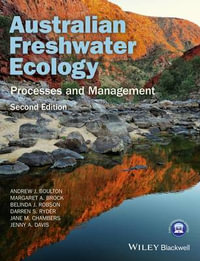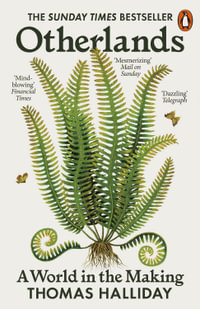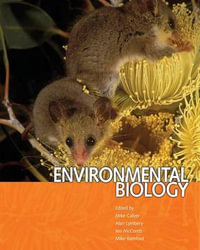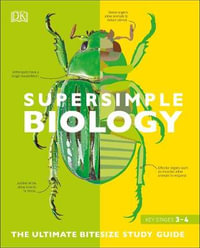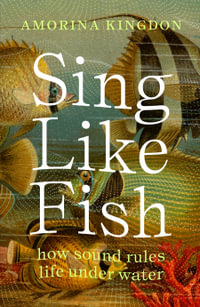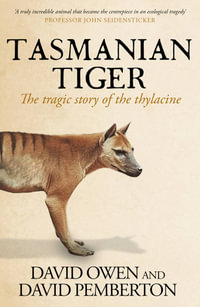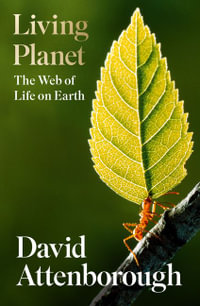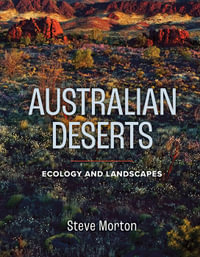
Wetlands
Functioning, Biodiversity Conservation, and Restoration
By: Roland Bobbink (Editor), Boudewijn Beltman (Editor), Jos T.A. Verhoeven (Editor)
Paperback | 7 February 2008
At a Glance
344 Pages
23.39 x 15.6 x 1.83
Paperback
$264.27
or 4 interest-free payments of $66.07 with
orAims to ship in 7 to 10 business days
Industry Reviews
From the reviews:
"The comprehensive book represents a successful mixture of contributions valuable for scientists as well as for decision makers dealing with wetland conservation and restoration. ... the book is qualified for both, readers interested in getting a general survey of a specific topic and experts interested in picking up new detailed information. ... All in all I recommend this book particularly because ... chapters are reviews containing a lot of valuable information. The price is adequate." (Joachim Schrautzer, Phytocoenologia, Vol. 38 (1-2), August, 2008)
| Wetland Functioning in Relation to Biodiversity Conservation and Restoration | p. 1 |
| Introduction | p. 1 |
| Functioning of Plants and Animals in Wetlands | p. 2 |
| Biodiversity Conservation and Wetlands | p. 6 |
| Ecological Restoration of Wetlands | p. 8 |
| Synthesis | p. 11 |
| References | p. 12 |
| Functioning of Plants and Animals in Wetlands | |
| Plant Survival in Wet Environments: Resilience and Escape Mediated by Shoot Systems | p. 15 |
| Introduction | p. 15 |
| How Excess Water Threatens Plant Life | p. 17 |
| Excluding and Trapping Effects of Water | p. 18 |
| The Energy Crisis | p. 19 |
| Resilience | p. 19 |
| Oxygen Shortage | p. 19 |
| Shortage of Carbon Dioxide | p. 22 |
| Escape | p. 26 |
| Aerobic Shoot Extension (the Aerobic Escape) | p. 26 |
| Anaerobic Shoot Extension (the Anaerobic Escape) | p. 29 |
| Summary | p. 30 |
| References | p. 32 |
| Center Stage: The Crucial Role of Macrophytes in Regulating Trophic Interactions in Shallow Lake Wetlands | p. 37 |
| Introduction | p. 37 |
| Central Position of Aquatic Vegetation | p. 38 |
| Central Themes: Zooplankton Depend on Macrophytes as Habitats | p. 39 |
| Central Themes: Chemical Ecology Spans Trophic Levels | p. 42 |
| Central Themes: Impacts of Grazer-Epiphyton Interactions with Macrophytes | p. 45 |
| Central Themes: Prevalance of Fish Influence in Shallow Lakes | p. 49 |
| In the Wings: Research Areas Worthy of Attention | p. 51 |
| Predictability of Macrophyte Function in Trophic Interactions Across a Climatic Gradient | p. 51 |
| Relative Importance of Chemical Ecology Across Trophic Levels | p. 52 |
| Disproportional Impacts of Certain Invertebrates and Exotic Species | p. 52 |
| Returning to Center Stage: Macrophytes are Common Players in Trophic Interactions | p. 53 |
| References | p. 53 |
| Biological Invasions: Concepts to Understand and Predict a Global Threat | p. 61 |
| Introduction | p. 61 |
| What is a Biological Invasion? | p. 62 |
| Impacts of Biological Invasions | p. 63 |
| Ecological Impacts | p. 63 |
| Evolutionary Impacts | p. 64 |
| Economic Impacts | p. 64 |
| Human Health Impacts | p. 65 |
| Measuring Impacts | p. 65 |
| Examples of Biological Invasions | p. 66 |
| Understanding and Predicting Biological Invasions | p. 68 |
| Invading Species Approach | p. 68 |
| Invaded Ecosystem Approach | p. 70 |
| Relationship Between Invader and Invaded Ecosystem (Key-Lock Approach) | p. 77 |
| Invasion Processes Differentiated in Time | p. 79 |
| Comparative Historical Approach | p. 83 |
| Shadows on the Prospects of Prediction | p. 84 |
| Conclusion | p. 85 |
| References | p. 85 |
| Conservation and Management of Wetlands | |
| Wetland Conservation and Management: Questions for Science and Society in Applying the Ecosystem Approach | p. 93 |
| Introduction | p. 93 |
| Wetlands at the Interface | p. 93 |
| Recognising a New Paradigm in Ecosystem Management | p. 97 |
| The Ecosystem Approach | p. 97 |
| Principle 1: The Management of Land, Water and Living Resources is a Question of Societal Choice | p. 99 |
| Principle 3: Ecosystem Managers Should Consider the Effects of Their Activities on Adjacent and Other Ecosystems; and Principle 7: The Ecosystem Approach Should be Undertaken at the Appropriate Scale | p. 103 |
| Principle 4: There is a Need to Understand the Ecosystem in an Economic Context | p. 107 |
| Principle 9: Management must Recognise that Change is Inevitable | p. 109 |
| Principle 10: The Ecosystem Approach Should Seek the Appropriate Balance Between Conservation and Use of Biological Diversity | p. 111 |
| Conclusion | p. 113 |
| References | p. 114 |
| Wetlands in the Tidal Freshwater Zone | p. 117 |
| Characteristics of Tidal Freshwater Wetlands | p. 117 |
| Human Activities | p. 121 |
| Historical Development | p. 121 |
| Water Quality Changes | p. 122 |
| Biological Variation Within the Freshwater Tidal Ecosystem | p. 122 |
| Vegetation Zonation | p. 123 |
| The Vegetation of European Tidal Freshwater Wetlands | p. 124 |
| The Vegetation of North American Tidal Freshwater Wetlands | p. 126 |
| Wildlife | p. 131 |
| Fish Species | p. 131 |
| Other Biota | p. 132 |
| Chemical and Physical Processes: the Wetland as a Filter | p. 134 |
| Restoration and Future Outlook | p. 138 |
| Europe | p. 138 |
| United States | p. 140 |
| Conclusions | p. 141 |
| References | p. 142 |
| Biodiversity in European Shallow Lakes: a Multilevel-Multifactorial Field Study | p. 149 |
| Introduction | p. 149 |
| Lake Selection | p. 151 |
| Sampling and Analysis | p. 153 |
| Lake Characteristics | p. 154 |
| Multidimensionality of System-Wide Biodiversity | p. 157 |
| Macrophytes and Nutrient Concentrations | p. 158 |
| Model and Expert Tools | p. 159 |
| Approach | p. 159 |
| PCLake | p. 160 |
| The Expert System BASIS | p. 164 |
| Combined Models; and PCLake and BASIS as Management Tools | p. 164 |
| Synthesis: Policy Implications of the Results | p. 165 |
| References | p. 166 |
| River Basin Management to Conserve Wetlands and Water Resources | p. 169 |
| Introduction | p. 169 |
| Systematically Prioritising Wetland Conservation: Freshwater Ecoregion Conservation | p. 172 |
| Freshwater Ecoregions | p. 172 |
| Planning Conservation of Freshwater Ecoregions | p. 172 |
| Rapid Assessment of Watersheds and Landscapes in Data-Short River Basins | p. 175 |
| Using Treaties to Conserve Wetlands and River Basin | p. 176 |
| The Ramsar Convention on Wetlands | p. 176 |
| Convention on Biological Diversity | p. 178 |
| European Union's Water Framework Directive | p. 178 |
| Poverty Reduction Through Wetlands Conservation | p. 180 |
| Yangtze River and Dongting Lake | p. 180 |
| Xipanshanzhou Polder | p. 181 |
| Quinshan Polder and Lessons Learned | p. 182 |
| Conservation and Wise Use of Wetlands: a Regional Partnership Approach | p. 182 |
| Ramsar Convention and Regional Initiatives | p. 183 |
| MedWet - The Mediterranean Wetlands Initiative | p. 184 |
| Great Asian Mountains Wetlands | p. 185 |
| Target-Driven Wetland Conservation: Lessons from WWF's Program FY99-FY04 | p. 187 |
| Target 1: Protect and Sustainably Manage 250 × 106 ha of Freshwater Ecosystems Worldwide | p. 187 |
| Target 2: Restore and Conserve Ecological Processes in More Than 50 River or Lake Basins | p. 189 |
| Target 3: Best Practices in Water management are Adopted in Key Water-Using Sectors | p. 192 |
| Conclusion | p. 193 |
| References | p. 194 |
| Aspects of Adaptive Management of Coastal Wetlands: Case Studies of Processes, Conservation, Restoration, Impacts and Assessment | p. 197 |
| Introduction | p. 197 |
| Diverse Tools to Identify Processes and Long-Term Changes | p. 200 |
| Geomorphic Evolution and Vegetation History | p. 201 |
| Human Modification of Carbrook Wetlands | p. 203 |
| Conclusion | p. 205 |
| Managing for Conservation: Monitoring Ecological Changes in Coastal Wetlands in Northeast Florida, USA | p. 205 |
| Approach | p. 206 |
| Environmental Characteristics | p. 206 |
| Conclusion | p. 209 |
| Managing for Restoration: a Multi-Scale Adaptive Approach in Restoring Coastal Wetlands in Louisiana, USA | p. 209 |
| Approach | p. 210 |
| Lessons Learned | p. 210 |
| Program Recommendations | p. 213 |
| Conclusion | p. 214 |
| Managing the Environment to Reduce Insect Pests: a Multivariate Approach to Assess Impacts of Disturbance on Saltmarsh Processes in Subtropical Australia | p. 214 |
| Approach | p. 215 |
| Conclusion | p. 216 |
| Use of Remote Sensing to Monitor Hydrologic Processes in Mangrove Forests and to Integrate Across the Adaptive Management Framework | p. 217 |
| Approach | p. 217 |
| Conclusions | p. 219 |
| References | p. 220 |
| Wetland Restoration and Creation | |
| Contrasting Approaches to the Restoration of Diverse Vegetation in Herbaceous Wetlands | p. 225 |
| Introduction | p. 225 |
| Restoration Contexts | p. 228 |
| Restoration Targets | p. 230 |
| Discouraging Undesirable Species | p. 230 |
| Undesirable Invaders | p. 231 |
| Controlling Invasives | p. 233 |
| Minimizing Eutrophication | p. 233 |
| Establishing Appropriate Hydrology | p. 235 |
| Encouraging Desirable Species | p. 235 |
| Site Modifications | p. 236 |
| Natural Recruitment | p. 237 |
| Sowing Seed | p. 238 |
| The Decision to Plant | p. 240 |
| Suitable Sources for Propagules | p. 241 |
| Emerging Principles | p. 242 |
| References | p. 243 |
| Fen Management and Research Perspectives: An Overview | p. 247 |
| Introduction | p. 247 |
| Hydrological Systems of Fens | p. 249 |
| Large and Small Hydrological Systems | p. 250 |
| Natural Fens Can Be Very Stable | p. 251 |
| Hydrochemical Processes Stabilizing the Biodiversity of Fens | p. 253 |
| Eutrophication in Fens | p. 254 |
| Change in Management | p. 254 |
| Change in Nutrient Budgets | p. 254 |
| Internal Eutrophication | p. 256 |
| Seed Bank and Seed Dispersal | p. 258 |
| Seed Banks | p. 259 |
| Seed Dispersal | p. 260 |
| Fen Restoration: An Example From Hungary | p. 260 |
| Introduction | p. 260 |
| Destruction and Restoration of a Fen System in Hungary | p. 261 |
| Monitoring and Evaluation ofthe Created Wetland | p. 262 |
| Concluding Remarks | p. 263 |
| References | p. 265 |
| Social Learning in Wetland Development | p. 269 |
| Introduction | p. 269 |
| Socio-Technical Characteristics of Wetlands | p. 270 |
| Different Perspectives on Planning | p. 273 |
| Social Learning as Part ofa Mix of Governance Approaches | p. 275 |
| Social Learning in Wetland Development | p. 277 |
| Conclusions | p. 281 |
| References | p. 282 |
| Eco-Hydrological Functioning of the Biebrza Wetlands: Lessons for the Conservation and Restoration of Deteriorated Wetlands | p. 285 |
| Introduction | p. 285 |
| General Characteristics of the Biebrza Valley | p. 287 |
| Introduction | p. 287 |
| Geomorphology, Lithology, and Geo-Hydrology | p. 287 |
| Vegetation | p. 289 |
| Birds and Mammals | p. 290 |
| Hydrology of the Biebrza Valley | p. 290 |
| Surface Water: Hydrography and Hydrology | p. 290 |
| Groundwater | p. 292 |
| Flooding | p. 292 |
| Drainage | p. 294 |
| Relation Between Hydrology and Vegetation Zoning | p. 297 |
| Productivity and Nutrient Limitation of Marsh and Fen Vegetation | p. 301 |
| Discussion and Conclusions | p. 304 |
| References | p. 307 |
| Subject Index | p. 311 |
| Table of Contents provided by Publisher. All Rights Reserved. |
ISBN: 9783540774204
ISBN-10: 3540774203
Series: Ecological Studies
Published: 7th February 2008
Format: Paperback
Language: English
Number of Pages: 344
Audience: Professional and Scholarly
Publisher: Springer Nature B.V.
Country of Publication: DE
Dimensions (cm): 23.39 x 15.6 x 1.83
Weight (kg): 0.58
Shipping
| Standard Shipping | Express Shipping | |
|---|---|---|
| Metro postcodes: | $9.99 | $14.95 |
| Regional postcodes: | $9.99 | $14.95 |
| Rural postcodes: | $9.99 | $14.95 |
How to return your order
At Booktopia, we offer hassle-free returns in accordance with our returns policy. If you wish to return an item, please get in touch with Booktopia Customer Care.
Additional postage charges may be applicable.
Defective items
If there is a problem with any of the items received for your order then the Booktopia Customer Care team is ready to assist you.
For more info please visit our Help Centre.
You Can Find This Book In

Ecology 6ed
The Experimental Analysis of Distribution and Abundance, Pearson New International Edition
Paperback
RRP $154.95
$123.90
OFF
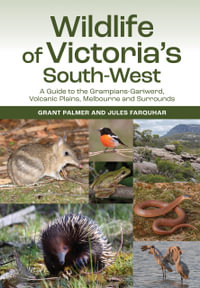
Wildlife of Victoria's South-West
A Guide to the Grampians-Gariwerd, Volcanic Plains, Melbourne and Surrounds
Paperback
RRP $49.99
$32.90
OFF
This product is categorised by
- Non-FictionScienceBiology, Life SciencesLife Sciences in GeneralEcological Science
- Non-FictionEarth Sciences, Geography, Environment, PlanningThe EnvironmentApplied EcologyBiodiversity
- Non-FictionEngineering & TechnologyEnvironmental Science
- Non-FictionEarth Sciences, Geography, Environment, PlanningThe EnvironmentConservation of The Environment
- Non-FictionEarth Sciences, Geography, Environment, PlanningGeographyPhysical Geography & TopographyWetlands
- Non-FictionScienceBiology, Life SciencesBotany & Plant SciencesPlant Ecology





